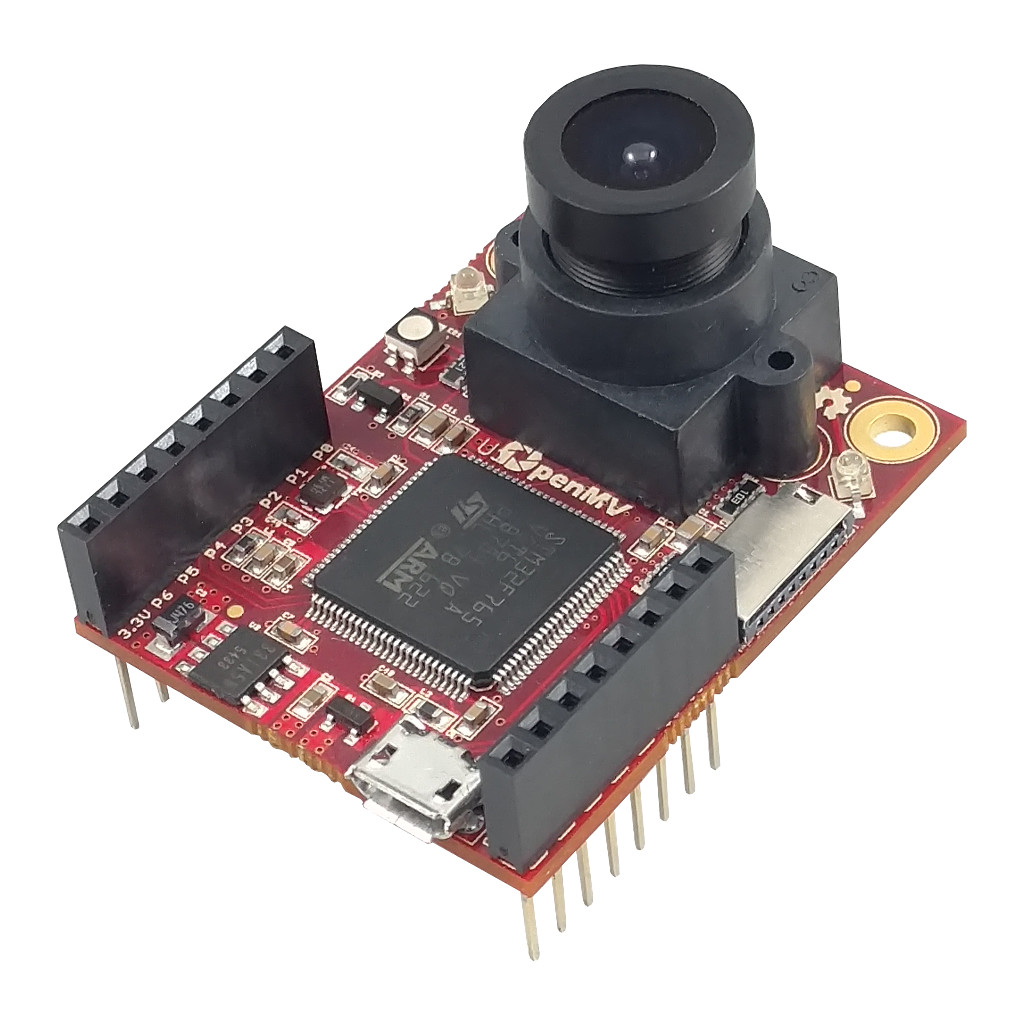
The OpenMV project aims at making machine vision more accessible to beginners by developing a user-friendly, open-source, low-cost machine vision platform.
OpenMV cameras are programmable in Python3 and come with an extensive set of image processing functions such as face detection, keypoints descriptors, color tracking, QR and Bar code decoding, AprilTags, GIF and MJPEG recording, and more. Additionally, the OpenMV Cam comes with a cross-platform IDE (based on Qt Creator) designed specifically to support programmable cameras. The IDE allows viewing the camera's frame buffer, accessing sensor controls, uploading scripts to the camera via serial over USB (or WiFi/BLE if available) and includes a set of image processing tools to generate tags, thresholds, keypoints, and etc...
The first generation of OpenMV cameras is based on STM32 ARM Cortex-M Digital Signal Processors (DSPs) and OmniVision sensors. The boards have built-in RGB and IR LEDs, USB FS support for programming and video streaming, a uSD socket, and I/O headers breaking out PWM, UARTs, SPI, I2C, CAN, and more. Additionally, the OpenMV Cam supports extension modules (shields) using the I/O headers for adding a WiFi adapter, a LCD Display, a Thermal Vision Sensor, a Motor Driver, and more.
The OpenMV project was successfully funded via Kickstarter back in 2015 and has come a long way since then. For more information, please visit https://openmv.io
For information on how to build the firmware for the OpenMV Cam please see our Firmware Guide.
The OpenMV Cam comes built-in with an RPC (Remote Python/Procedure Call) library which makes it easy to connect the OpenMV Cam to your computer, a SBC (single board computer) like the RaspberryPi or Beaglebone, or a microcontroller like the Arduino or ESP8266/32. The RPC Interface Library works over:
With the RPC Library you can easily get image processing results, stream RAW or JPG image data, or have the OpenMV Cam control another Microcontroller for lower-level hardware control like driving motors.
You can find examples that run on the OpenMV Cam under File->Examples->Remote Control in OpenMV IDE and online here. Finally, OpenMV provides the following libraries for interfacing your OpenMV Cam to other systems below:
If you only need to read print() output from a script running on the OpenMV Cam over USB then you only need to open the OpenMV Cam's Virtual COM Port and read lines of text from the serial port. For example (using pyserial):
import serial
ser = serial.Serial("COM3", timeout=1, dsrdtr=False)
while True:
line = ser.readline().strip()
if line: print(line)
The above code works for Windows, Mac, or Linux. You just need to change the above port name to the same name of the USB VCP port the OpenMV Cam shows up as (it will be under /dev/ on Mac or Linux). Note that if you are opening the USB VCP port using another serial library and/or language make sure to set the DTR line to false - otherwise the OpenMV Cam will suppress printed output.
此处可能存在不合适展示的内容,页面不予展示。您可通过相关编辑功能自查并修改。
如您确认内容无涉及 不当用语 / 纯广告导流 / 暴力 / 低俗色情 / 侵权 / 盗版 / 虚假 / 无价值内容或违法国家有关法律法规的内容,可点击提交进行申诉,我们将尽快为您处理。